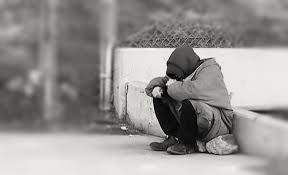Understanding the Connection Between Addiction and Crime
Addiction and crime are deeply intertwined, creating a complex cycle that traps individuals, families, and communities. Substance abuse often leads to behaviors that conflict with societal norms and laws, whether through direct offenses like drug possession or indirect actions like theft to support an addiction. Breaking this cycle requires a holistic approach, addressing the root causes and implementing effective strategies for prevention, intervention, and rehabilitation.
The Role of Addiction in Criminal Behavior
Substance addiction alters brain chemistry, impairing judgment and self-control. These changes increase the likelihood of impulsive or criminal actions. For instance, a person struggling with alcohol addiction might commit violent acts due to impaired decision-making, while someone addicted to opioids may resort to theft to fund their habit.
Statistics show that a significant portion of the prison population struggles with substance use disorders. According to studies, over 65% of incarcerated individuals meet the criteria for addiction, yet only a fraction receives proper treatment while in custody. This lack of support perpetuates a cycle of relapse and recidivism upon release.
The Impact of Addiction-Driven Crime on Society
Addiction-fueled crime takes a toll on communities. Beyond the financial burden of increased policing and incarceration, there’s a social cost—strained relationships, unsafe neighborhoods, and the erosion of trust. Families of addicted individuals often face stigma, isolation, and emotional trauma, which can perpetuate cycles of dysfunction across generations.
Communities with limited access to healthcare and addiction treatment bear the brunt of these challenges. Addressing addiction and crime effectively requires focusing on equity and ensuring resources reach underserved areas.
Breaking the Cycle: Prevention and Early Intervention
Preventing addiction and crime begins with addressing the factors that contribute to substance abuse. Education plays a crucial role in equipping individuals, especially youth, with the knowledge and tools to make healthy decisions.
Programs that teach emotional regulation, stress management, and resistance to peer pressure can reduce the likelihood of substance abuse. Additionally, raising awareness about the risks of addiction through school and community initiatives helps foster a culture of prevention.
Early intervention is equally critical. Identifying individuals at risk—such as those exposed to trauma, poverty, or familial addiction—and providing support can prevent the onset of substance abuse. These interventions might include counseling, mentorship, or access to programs like oliveeldercare, which offer holistic care and support for individuals and families facing challenges related to addiction.
The Importance of Rehabilitation Over Punishment
Traditional punitive approaches to addiction-related crime have proven ineffective. Incarceration often exacerbates the problem, as individuals leave prison without the tools to manage their addiction, leading to a high likelihood of relapse and reoffending.
Rehabilitation-focused programs, on the other hand, offer a more sustainable solution. Drug courts, for instance, provide alternatives to incarceration, emphasizing treatment and accountability. Participants in these programs are required to attend therapy, undergo regular drug testing, and adhere to personalized recovery plans. Studies have shown that such programs significantly reduce recidivism rates compared to traditional sentencing.
Rehabilitation efforts also extend beyond the individual. By involving families in the recovery process, programs like oliveeldercare strengthen the support network around the person struggling with addiction, increasing the chances of long-term success.
Community-Based Solutions to Address Addiction and Crime
Community engagement is vital in breaking the cycle of addiction and crime. Local organizations, healthcare providers, and law enforcement agencies must work collaboratively to create environments that prioritize rehabilitation over punishment.
Harm reduction strategies, such as needle exchange programs and supervised consumption sites, aim to minimize the negative consequences of addiction while offering a gateway to treatment. These initiatives reduce the spread of diseases and decrease drug-related deaths, creating safer communities.
Community policing models, where law enforcement officers are trained to recognize and respond to addiction-related issues with compassion and understanding, can also bridge the gap between individuals struggling with addiction and the resources they need.
Addressing the Root Causes
To truly break the cycle of addiction and crime, society must tackle its root causes. This includes addressing socioeconomic disparities, improving access to mental health care, and combating stigma.
Policies that focus on equitable healthcare access, such as expanding addiction treatment services in rural and underserved areas, are essential. Organizations like oliveeldercare provide comprehensive support that addresses both the physical and emotional aspects of addiction, helping individuals reintegrate into society with confidence and stability.
A Path Forward
Breaking the cycle of addiction and crime is not an overnight process—it requires sustained effort, collaboration, and compassion. By shifting the focus from punishment to rehabilitation and addressing the social determinants of addiction, we can create pathways to recovery that benefit individuals and communities alike.
The journey to recovery is challenging, but with the right tools, support systems, and community commitment, individuals can reclaim their lives, and society can pave the way for a healthier, safer future.





